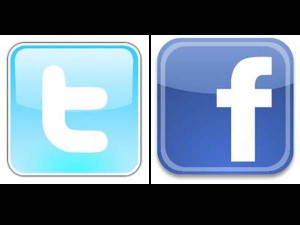
She is one of six non-voters taking part in a CNN project that uses social networks to try and persuade people in Hawaii to cast their ballot in Tuesday’s presidential poll, one of many ‘get-out-the-vote’ initiatives on social media.
The project encourages people to send compelling voting arguments to the six via Facebook, Twitter and Google+ and by doing so reach other election-skeptics in Hawaii – which has one of the lowest voter turnouts in the US.
“Hawaii in a lot of ways is detached from the rest of the US, it feels that way,” said John Sutter, a reporter at CNN.com who set up the ‘Change the List’ project.
“But this can forge a connection. Even though geography really separates that state from the rest, on the Internet, everything is much closer.”
As the election nears, social networks are being used extensively to try and persuade people of the importance of voting and even beat the record 2008 turnout, when two-thirds of US voters cast a ballot in the election.
A project endorsed by First Lady Michelle Obama, for instance, encourages people to take photos with their kids when they vote and post them on social networks, to teach the younger generation about the workings of democracy.
On Foursquare, the location-based social network, users can connect an app to their account and find the nearest polling station. On Tuesday, they will be able to see who voted across the United States on an online map.
And Facebook will reportedly post get-out-the-vote messages Tuesday to millions of voting-age Americans on the social network.
So far, dozens have sent comments to the six in the CNN project. “If you don’t vote, you can’t change Hawaii’s statehood status. Scotland nationalists got them their own Parliament… by voting,” @Deporodh told Teruya on Twitter.
Whether they will cast their ballot will only become apparent on Tuesday, and it is still unclear how effective social media is in getting concrete results.
One study conducted on Facebook by University of California researchers during the 2010 US mid-term elections indicates the social network could have an influence in voter turnout.
The study targeted 61 million Facebook users. People in one group received a big message at the top of their news feed encouraging them to vote with a link to data about polling places and a clickable ‘I voted’ button.
Another group got a ‘social’ message that contained the same information, as well as the profile pictures of six friends who had already pressed the button. Results found this post increased turnout by some 340,000 voters.
Robert Bond, a political science graduate student who was one of the authors of the study, said sharing personal information was a strong social media asset.
“A message sent by friends is much more powerful than a message being sent by a campaign on its own,” he said — a fact campaigns and others are trying to capitalize on.
Fight for the Future, a non-profit organization that promotes Internet freedom, has created a Facebook app called ‘Vote with Friends’ that enables users to see which of their virtual comrades are registered to vote.
Users can invite friends to register, pledge to vote and eventually see whether they did cast their ballot.
“This creates some social accountability. Friends say ‘I want you to promise you’ll vote and I will hold you accountable’,” said Josh Segall, spokesman for the organization.
Barack Obama and his Republican challenger Mitt Romney have also rolled out similar apps.
But Bond cautioned that the impact from social media was still likely to be small.
“As we demonstrated with our study, even something like a big message on Facebook has a really small impact on real-world voting,” he said.